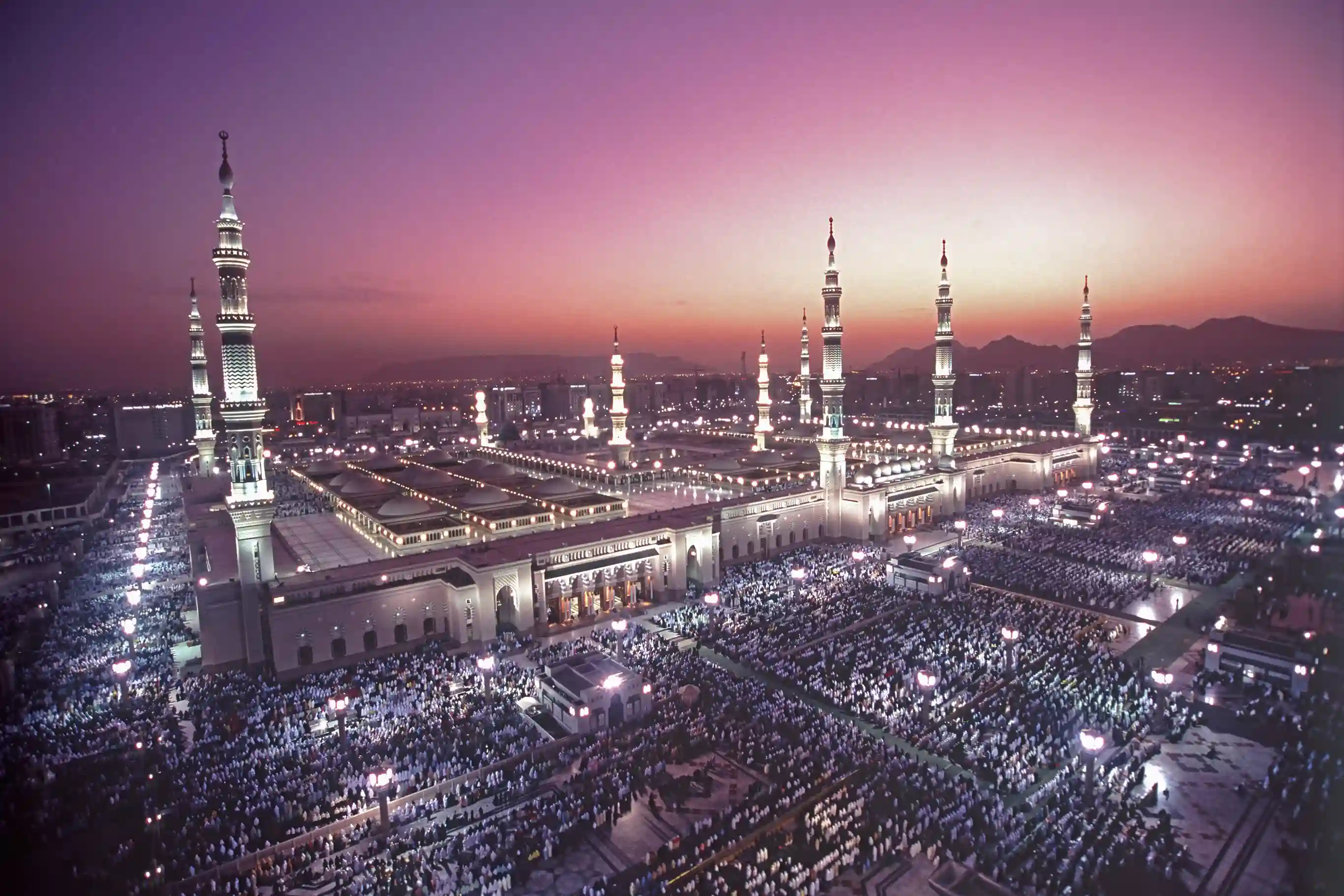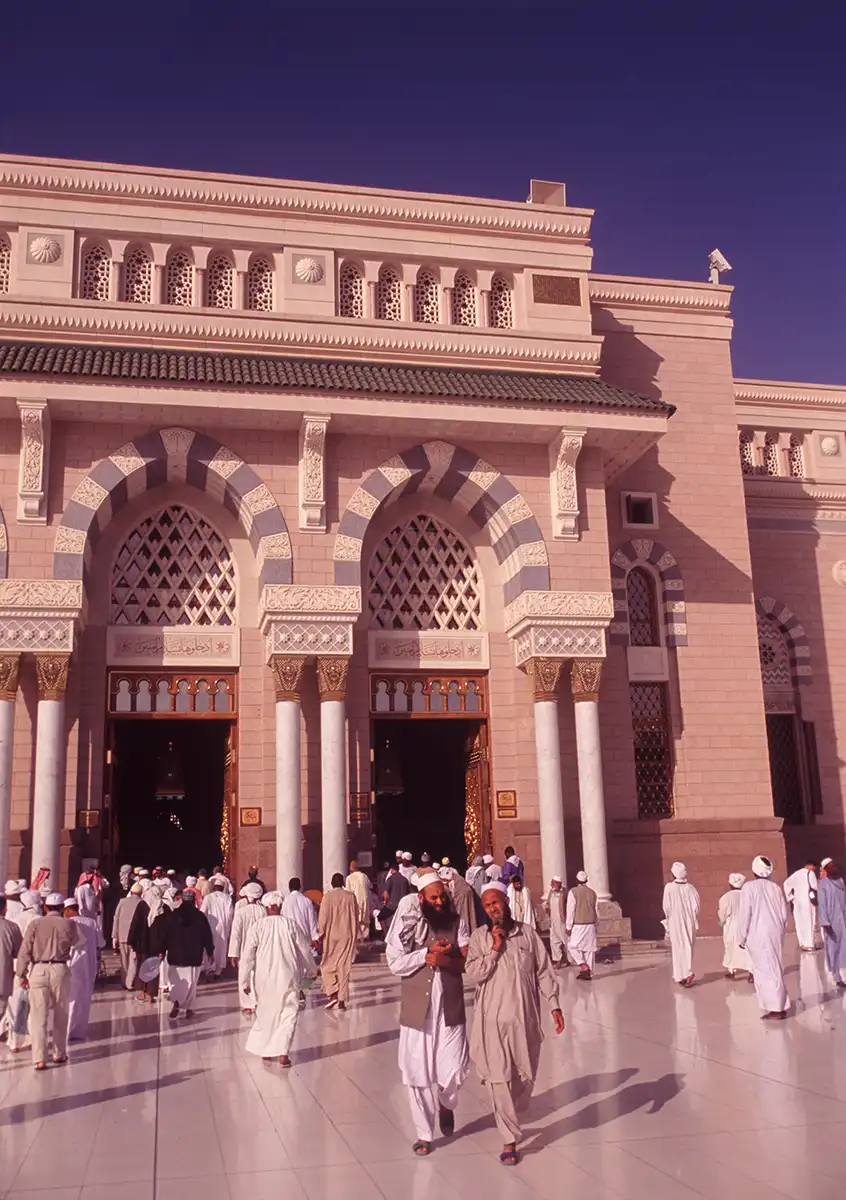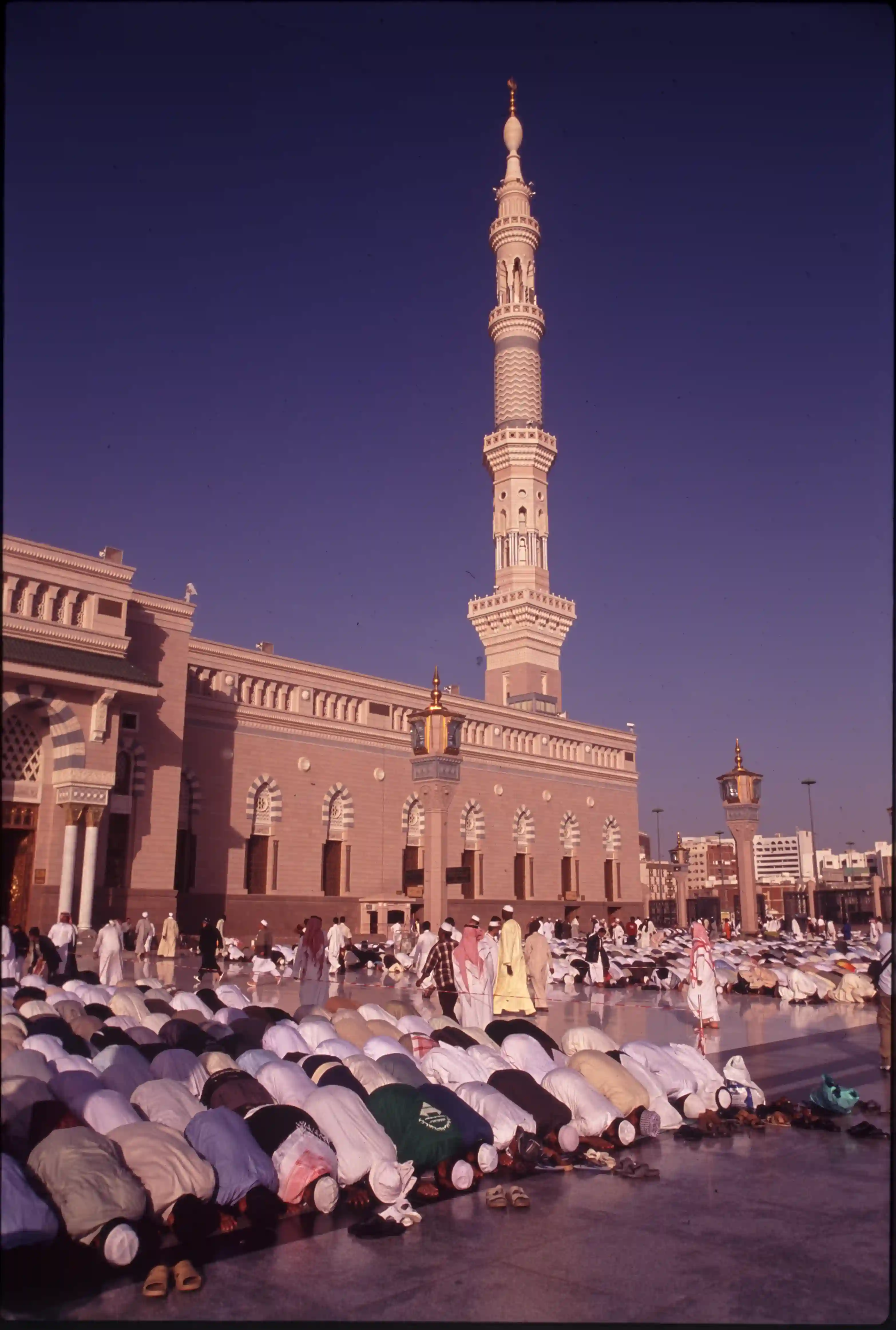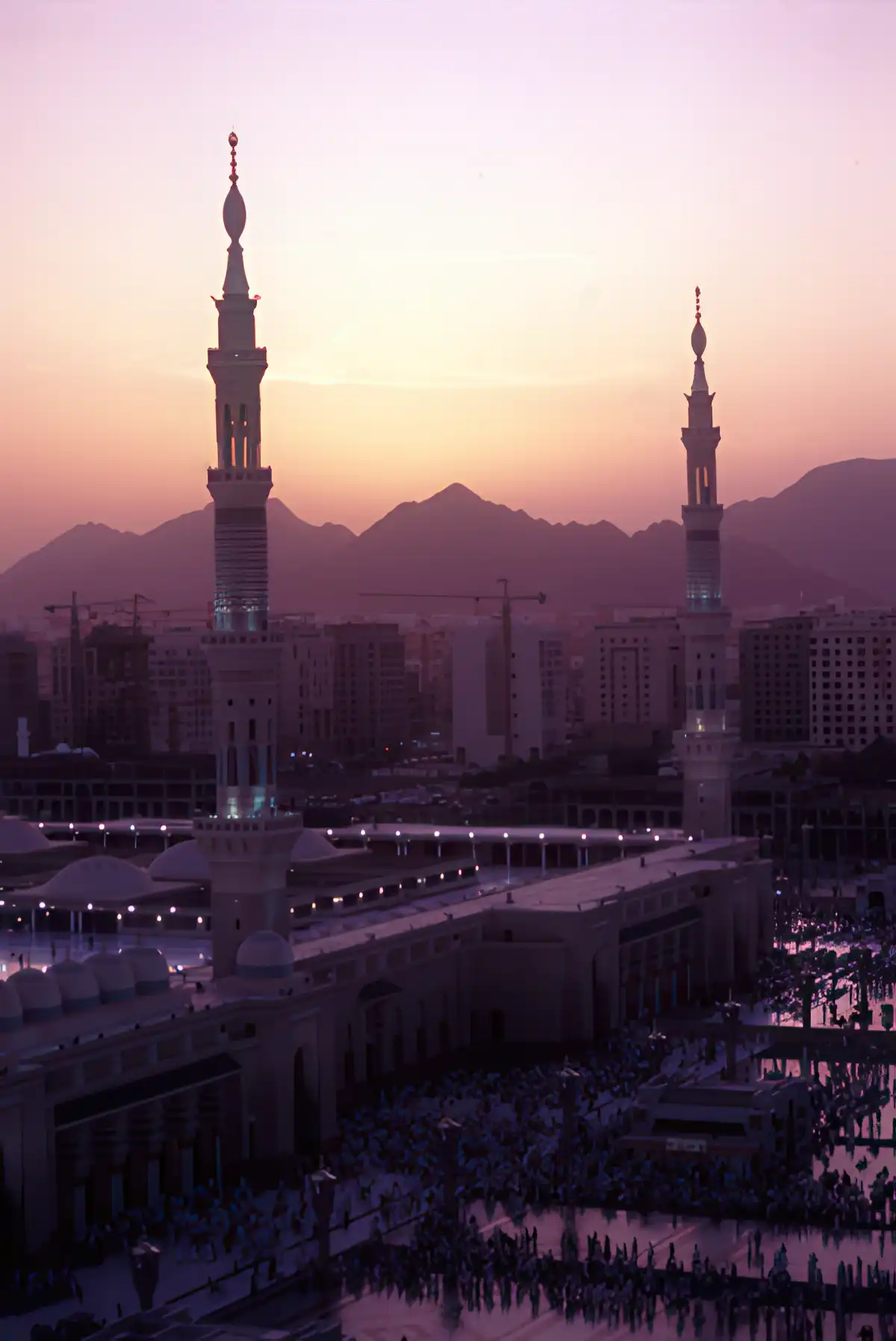Prophet’s Mosque, Medina
The Prophet's Mosque (Al-Masjid an-Nabawi) in Medina, Saudi Arabia, is one of Islam's holiest sites, second only to the Kaaba in Mecca. Built by the Prophet Muhammad in 622 CE, it served as his home, a place of worship, and a community center, and it houses his tomb, making it a central pilgrimage destination for Muslims worldwide. Its historical significance, architectural grandeur, and spiritual role draw millions annually, particularly during Hajj and Umrah.
The mosque's history began with Muhammad's migration (Hijra) from Mecca to Medina, where he and his followers constructed the original structure using palm trunks and mud bricks. This modest complex included a courtyard, prayer hall, and living quarters. After Muhammad's death in 632 CE, he was buried in his wife Aisha's chamber, now within the mosque, alongside the first two caliphs, Abu Bakr and Umar. Successive expansions under the Umayyad, Abbasid, and Ottoman dynasties transformed it into a grand edifice. The Ottoman Sultan Suleiman the Magnificent added the iconic green dome over the Prophet's tomb in the 16th century, a defining feature today. Saudi rulers, particularly in the 20th century, vastly enlarged the mosque, with a major 1994 renovation increasing its capacity to over one million worshippers. The current structure spans 400,000 square meters, featuring ten minarets, vast courtyards with retractable umbrellas, and intricate marble and gold detailing.
As a pilgrimage site, the Prophet's Mosque is integral to the Islamic spiritual journey. While not obligatory like Hajj, visiting Medina during Hajj or Umrah is highly recommended. Pilgrims flock to the Rawdah, a small area between the Prophet's tomb and his pulpit, believed to be a "garden of paradise" where prayers are especially potent. Access to the Rawdah is tightly managed due to crowds, with separate timings for men and women. Pilgrims offer salutations (salam) at the tombs of Muhammad, Abu Bakr, and Umar, seeking blessings and intercession, though veneration is strictly directed to God per Islamic teachings. The mosque's serene ambiance, enhanced by its cool marble floors and chandeliers, fosters reflection and prayer.
The mosque's role extends beyond pilgrimage. It hosts daily prayers, Quranic recitations, and religious lectures, serving as a global hub for Islamic learning. During Ramadan, its significance peaks, with millions attending Taraweeh prayers. The surrounding area, including historic sites like the Quba Mosque, complements the pilgrimage experience. However, strict Saudi regulations govern access, requiring pilgrims to be Muslim and adhere to modest dress and behavior codes.
Despite its sanctity, the mosque has faced challenges, including a 1979 siege by extremists and ongoing debates over expansions altering historic elements. Modern facilities, such as air-conditioned halls and multilingual guides, ensure pilgrim comfort. The Prophet's Mosque remains a timeless symbol of Islamic unity, drawing devotees to connect with Muhammad's legacy, pray in a sacred space, and experience the spiritual heart of Medina's vibrant religious landscape.

Martin Gray is a cultural anthropologist, writer and photographer specializing in the study of pilgrimage traditions and sacred sites around the world. During a 40 year period he has visited more than 2000 pilgrimage places in 160 countries. The World Pilgrimage Guide at sacredsites.com is the most comprehensive source of information on this subject.




